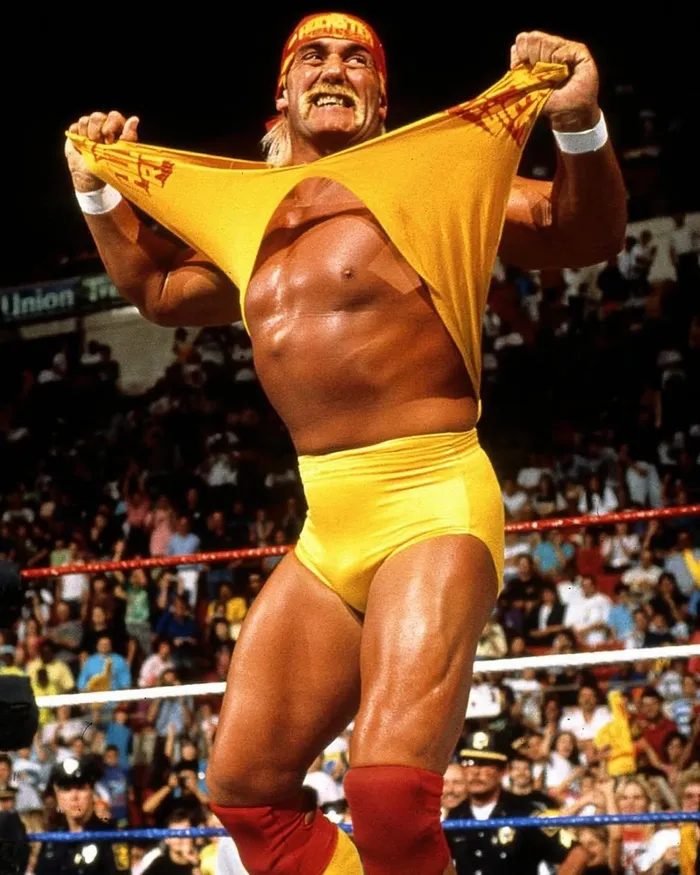Hulk Hogan dies at 71: the wrestling legend who became a pop culture powerhouse

Hulk Hogan influenced fashion, music and the way sports personalities built their brands long before the age of social media.
Image: Hulk Hogan Instagram
Hulk Hogan, the larger-than-life icon who helped catapult professional wrestling into the mainstream and became one of the most recognisable faces in global pop culture, has died at the age of 71.
“WWE is saddened to learn WWE Hall of Famer Hulk Hogan has passed away,” World Wrestling Entertainment said in a statement on Thursday.
“One of pop culture’s most recognisable figures, Hogan helped WWE achieve global recognition in the 1980s. WWE extends its condolences to Hogan’s family, friends and fans.”
Born Terry Gene Bollea in Augusta, Georgia, Hogan's rise to fame in the 1980s marked a groundbreaking shift in both professional wrestling and entertainment.
With his trademark handlebar moustache, ever-present bandanas, ripped yellow tank tops, and unmatched charisma, Hogan transformed wrestling from a niche sporting event into a global entertainment spectacle.
He was the ultimate showman - larger than life both inside and outside the ring - and his appeal transcended generations, geography and even the sport itself.
Hogan was more than just a wrestler; he was a cultural force. In an era where television and merchandising were redefining fame, Hogan stood at the intersection of sports, television and consumer culture.
His famous catchphrases - “Whatcha gonna do when Hulkamania runs wild on you?” - became part of the vocabulary, and millions of children around the world idolised him as the ultimate American hero.
He referred to his massive arms as “24-inch pythons”, an example of how he leaned into self-mythology and created a persona that felt mythic.
During the height of “Hulkamania”, Hogan wasn’t just headlining WrestleMania - he was starring in Hollywood films like “No Holds Barred” and “Suburban Commando”, hosting TV shows and making guest appearances in everything from “The A-Team" to “Baywatch”.
His animated series, “Hulk Hogan’s Rock 'n' Wrestling”, introduced him to younger audiences, cementing his status as a family-friendly star during the 1980s and early '90s.
Few athletes in history have managed to straddle so many entertainment formats with such ease and impact.
Hogan’s crossover appeal helped WWE become a pop culture movement, influencing how the industry marketed its stars.
He was the first professional wrestler to truly achieve celebrity status outside the ring, paving the way for future superstars like Dwayne “The Rock” Johnson and John Cena to make the leap into mainstream media.
Twice inducted into the WWE Hall of Fame, first in 2005 as an individual and again in 2020 as a member of the nWo (New World Order), Hogan was never one to downplay his legacy.
He once declared himself the “Babe Ruth of wrestling”, a fitting comparison to the baseball legend whose name became shorthand for greatness in his sport.
But beyond the accolades and title belts, Hogan represented an era when wrestling was at its most theatrical, most explosive and most influential.
He embodied the 1980s ethos of showmanship and patriotism, and was often seen waving an American flag in the ring and urging young fans to "train, say your prayers and eat your vitamins.”
While Hogan’s later years were not without controversy, his cultural footprint remains undeniable.
He influenced fashion (who could forget the ripped shirts and colourful bandanas?), music (entrance themes like “Real American” became iconic), and the way sports personalities built their brands long before the age of social media.
As fans around the world mourn his passing, they also celebrate a man who turned wrestling into a pop spectacle, a household name and an indelible part of childhoods across generations.
Related Topics: